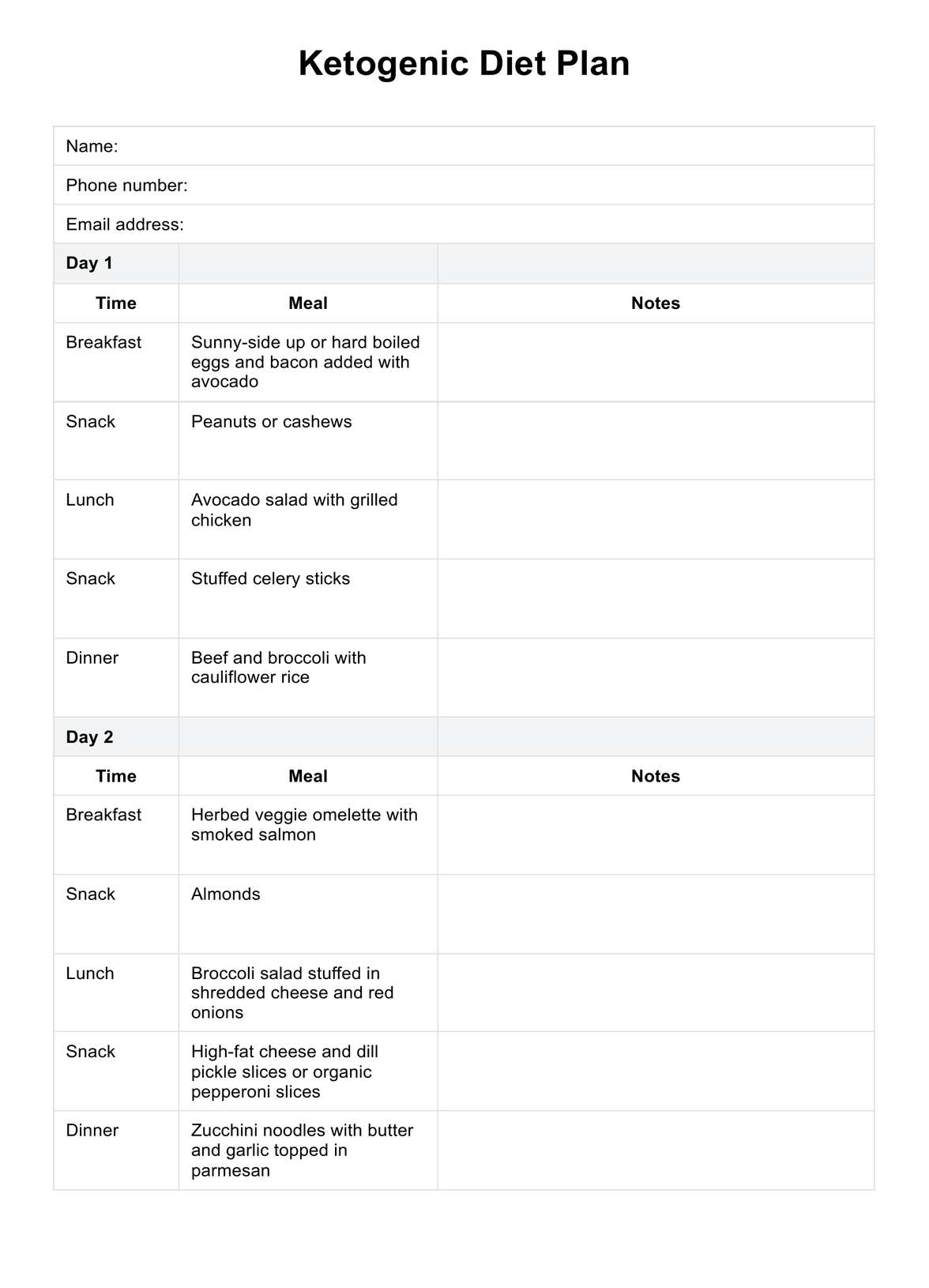Carepatron provides a free Ketogenic Diet Plan PDF, which you can download and use right away.

Ketogenic Diet Plan
A Ketogenic Diet Plan Template is a very low-carb plan that includes lean protein, low-carb vegetables, and moderate amounts of fat.
Use Template
Ketogenic Diet Plan Template
Commonly asked questions
The Ketogenic Diet Plan Template promotes weight loss, improves blood sugar control, and reduces the risk of certain chronic diseases.
The Ketogenic Diet Plan Template significantly reduces carbohydrate intake and increases fat intake, forcing the body to burn fat for energy instead of glucose.
EHR and practice management software
Get started for free
*No credit card required
Free
$0/usd
Unlimited clients
Telehealth
1GB of storage
Client portal text
Automated billing and online payments











